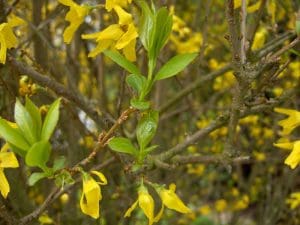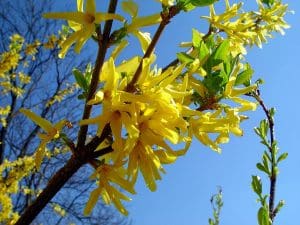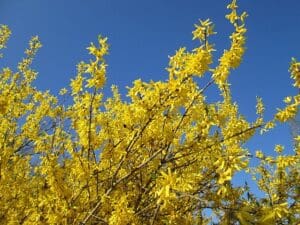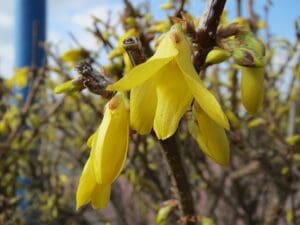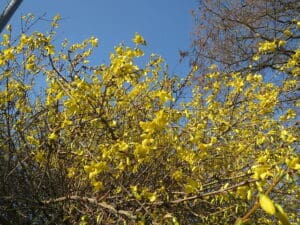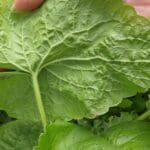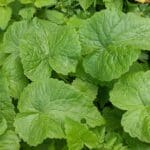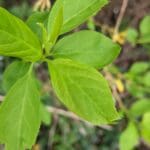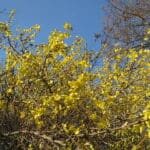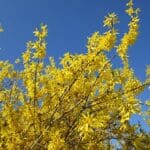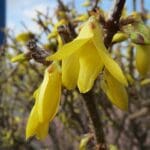Forsythia / Spring / Summer / Edible / Toxic
Forsythia is a beautiful plant that produces a beautiful vibrant yellow flower which is the only part I would advise for eating, it adds a vibrant pop of colour to salads and on top of dishes that you want to wow with!
Common Names
Forsythia, Golden Bell, Easter Tree
Botanical Name
Forsythia x intermedia
Scientific Classification
Kingdom – Plantae
Order – Lamiales
Family – Oleacea
Physical Characteristics of Forsythia
Growing up to 4m, this deciduous shrub is hairless and has tall, arching stems growing upwards.
Leaves
The leaves will only appear after the blooms. They can vary between species but are often ovate in shape, growing oppositely and are finely toothed along the margin. They will turn a yellow/purple in the Autumn before dropping.
Flowers
All species have 4 petalled yellow flowers which is distinctive of this genus. They are tubular with the petals joining at the base and will appear before the leaves.
Bark
Bark is rough and grey/brown in colour.
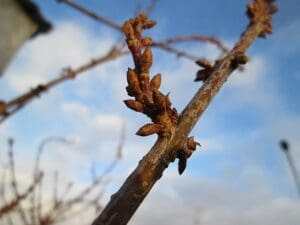
Habitat
Forsythia is native to East Asia. It’s commonly used as a garden shrub elsewhere in the world and is rarely found growing in the wild.
Known Hazards
Forsythia contains saponins and glycosides with the leaves containing phillyrin. You would need to eat a huge amount to be toxic in any way but worth noting and just using a few flowers here and there.
Could be Confused with
Forsythia is a shrub found within the olive family, Oleacea. There are around 11 species that look alike. F. x intermedia tends to be smaller in size.
You may confuse Forsythia at a distance with other shrubs that have yellow flowers such as Witch Hazel (Hamamelis) but look for the distinctive 4 yellow petals on the Forsythia.
Potentially confused with Gorse which also produces a more bush-looking plant and has vibrant yellow flowers – amongst other things gorse has very spikey branches which this one doesn’t
Edible Uses of Forsythia
As mentioned above, best to avoid any other part other than the flower. These can be a lovely, colourful addition to a salad or as a garnish when there’s not much else around in early spring.
Learn more about the toxic affects of Saponins on the human body here
Extra notes from the Foragers
The fruit from some Forsythia species is commonly used in Chinese medicine to treat inflammatory and infectious diseases and is known to bring down a fever. The leaves contain higher levels of Phillyrin which is a produced by fungi and studies have shown that Phillyrin from some Forsythia could increase glucose uptake under insulin resistance – Read more on it here



